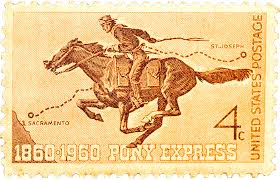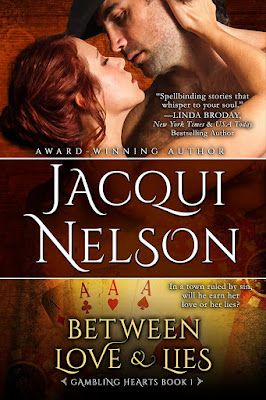Jim Baker, known much of his life as “Honest Jim Baker,” was of Scotch-Irish descent. He was born in Belleville, St. Claire, Illinois in 1818. His family was considered poor, and he learned to hunt small game as a boy. When he was seventeen, he traveled on foot to St. Louis, Missouri, where his grandfather lived in order to get an education.
Baker was sent home because he did not show much interest in an education. On the way, he listened to tales of adventures in the mountains. He met Jim Bridger and ended up signing a contract with the American Fur Company and joined his first trapping expedition.
On May 22, 1839, he left St. Louis with a large party, heading for the annual rendezvous in the Wyoming mountains. On May 25th, 1839, he and his party traveled on an old steamer, St. Peter, up the Missouri River to Kansas City. From there, the party was transported on keel boats traveling to Grand Island on the Platte River. They reached the Laramie Plains. It was there they first encountered Native Americans.
 |
| 1872 Map Southern Wyoming Territory |
The party continued down the Medicine Bow and Laramie Rivers to Sweetwater, crossing South Pass to arrive at Fort Bonneville, which was a fortified winter camp and fur trading post near present-day Pinedale, Wyoming.
In 1838 to 1839, Baker hunted and trapped the Wind River Mountains. In the spring of 1840 he returned home to Illinois.
During the spring of 1841, Jim set out for his second journey to the Rocky Mountains. He again traveled across the Laramie Plains, over South Pass, down the Green River to Bridger's camp at the Henry's Fork. Bridger, who was worried about his associate Henry Frapp (also known as Henry Fraeb), sent Baker along with others to search for the lost party who had been trapping at the Base of Squaw Mountain on the banks of the Little Snake River. The hunters had built a temporary fort and corral on a defensible hillock.
 |
| Battle Mountain - Carbon Co ctsy wyoming-fact-and-fiction.blogspot.com |
On August 21, 1841, Jim Baker noticed a cloud of dust arising on the southwest side of Bastion Mountain. This mountain is in the Medicine Bow Range on Wyoming’s southern border and sits near the tiny hamlet of Savery in Carbon County. Its peak reaches an elevation slightly over 9,100 feet, about 3,000 feet more than the surrounding area.
Battle Mountain earned its name from a six-day fight in 1841 between about thirty-five trappers and an estimated 700 warriors from three tribes, including Sioux, Cheyenne and Arapaho. The battle resulted in the deaths of as many as 100 natives. As the legend goes, the hunters were down to their last bullets when their tormentors finally decided they had enough and retreated from the scene. Captain Fraeb/Frapp died early in this fight, which left Jim Baker, twenty-one years of age, to take charge.
 |
| Jim Baker |
On August 27th, 1841, after the Natives retreated, the trappers departed and returned back to Bridger's camp. This battle earned Jim Baker the reputation as an Indian fighter. As a result of this battle, Bastion Mountain was given its new name: Battle Mountain.
In 1847, Baker settled for a short time in Salt Lake City, Utah, where he became a government Scout and guide. His talent to speak the Shoshone language and use Arapaho sign as well as his knowledge of the rivers, trails, mountains, led him to Old Mexico. He returned from there , where he returned with a regiment of soldiers to Fort Bridger.
In 1859, Jim Baker took up homestead near Denver, three miles north on Clear Creek. He built an adobe brick building at what is now 53rd and Tennyson Street, just west of Regis College. He built a toll bridge as well as owned the first coal mine in Colorado where Eris is now, 18 miles west of Denver. In the same year, Baker was appointed a captain in the Colorado Militia.
In 1873, Jim left Colorado and returned to the Little Snake River Valley to start a cattle ranch.
Baker was married several times, each time to a Native American woman. Marina was a daughter of the Shoshone chief Washakie. His other two wives were Shoshone sisters raised by a French family: Mary (Meteetsee) and Eliza (Yanatse). He had a total of fourteen children, but only six survived to accompany him to Savery, Wyoming in 1873. They were: William, Joseph (born to Marina) Mary, Isabelle, Madeline (born to Mary) and Jennie (born to Eliza). None of his three wives were with him in 1873, having either died or been sent away. He never remarried.
The Wikipedia article on Jim Baker gives many details about his posterity.
 |
| Jim Baker Cabin - Savery, Wyoming |
In Savery, Baker built a cabin from cotton wood trees that were chopped by Jim and his three daughters, Isabel, Madeline and Jennie. The cabin had three stories, the upper was used as a watch tower but as the threat of hostility with the Native tribes diminished, the third story was removed.
In 1875, Jim Baker served General Custer as a scout during the Fight at Rosebud in the Black Hills. In 1881, under the direction of Major Thomas T. Thornburgh of Fort Fred Steele, he again was ask to aide in yet another confict, this time with the Ute tribe, in what became known as The Meeker Massacre.
On May 15, 1898, at the age of eighty, Jim Baker died in his cabin near Savery, Wyoming. After traveling scouting from Missouri, to Oregon, from California to the Kansas territory, through Salt Lake and over the Rocky Mountains, one of the greatest scouts, trappers and Indian fighters of all time, died not far from Battle Mountain, the place that had earned him much fame as a young man of twenty-one. He was buried in a small cemetery overlooking the Little Snake River Valley.
In 1917, The Baker Cabin was removed from Savery and taken to Frontier Park in Cheyenne, Wyoming. However, in July, 1976, the home of Jim Baker was returned to Savery Wyoming. It is now located at the Little Snake River Museum in Savery. The cabin was reconstructed under the direction of Jim Baker's great-grandson, Paul McAllister, who still lives in Dixon, Wyoming.
~o0o~
I became acquainted with the story of Jim Baker and how Battle Mountain in Carbon County, Wyoming, got its name as I researched the history of the Little Snake River Valley for my upcoming
book, A Bride for Devlin. Earlier this year, I wrote Mail Order Blythe, which was set in Rawlins, Wyoming. It was then I learned about the stagecoach that operated between Rawlins and Baggs. Since my husband has been on
two deer hunting trips to Baggs, Wyoming, and raved about the area, I decided that was the region where I wanted my current book set.
There are three little towns in the Little Snake River Valley―
Baggs, Dixon, and Savery. Especially for the time period of my book, 1878, here is a dearth of historical information about these towns. However, while researching Savery, I came upon its most illustrious early resident, Jim Baker. He’s not included in my book, but I found his story interesting.
A Bride for Devlin is currently on preorder and will be released September 10, 2021.
Sources:
https://en.wikipedia.org/wiki/Jim_Baker_(frontiersman)
https://trib.com/news/state-and-regional/battle-for-battle-mountain-wyoming-leases-3-900-pristine-acres-for-oil-and-gas/article_8a56763f-00da-5a6f-836c-ca2824f6b1ec.html
http://wyoming-fact-and-fiction.blogspot.com/2017/03/battle-mountain-wyoming.html
https://www.littlesnakerivermuseum.com/jim_baker_bio































